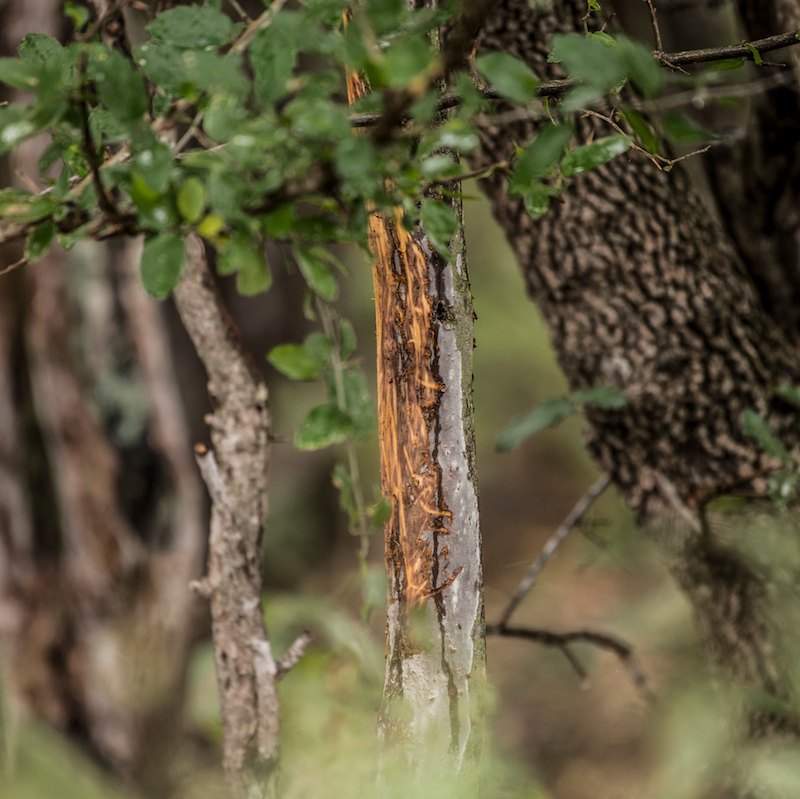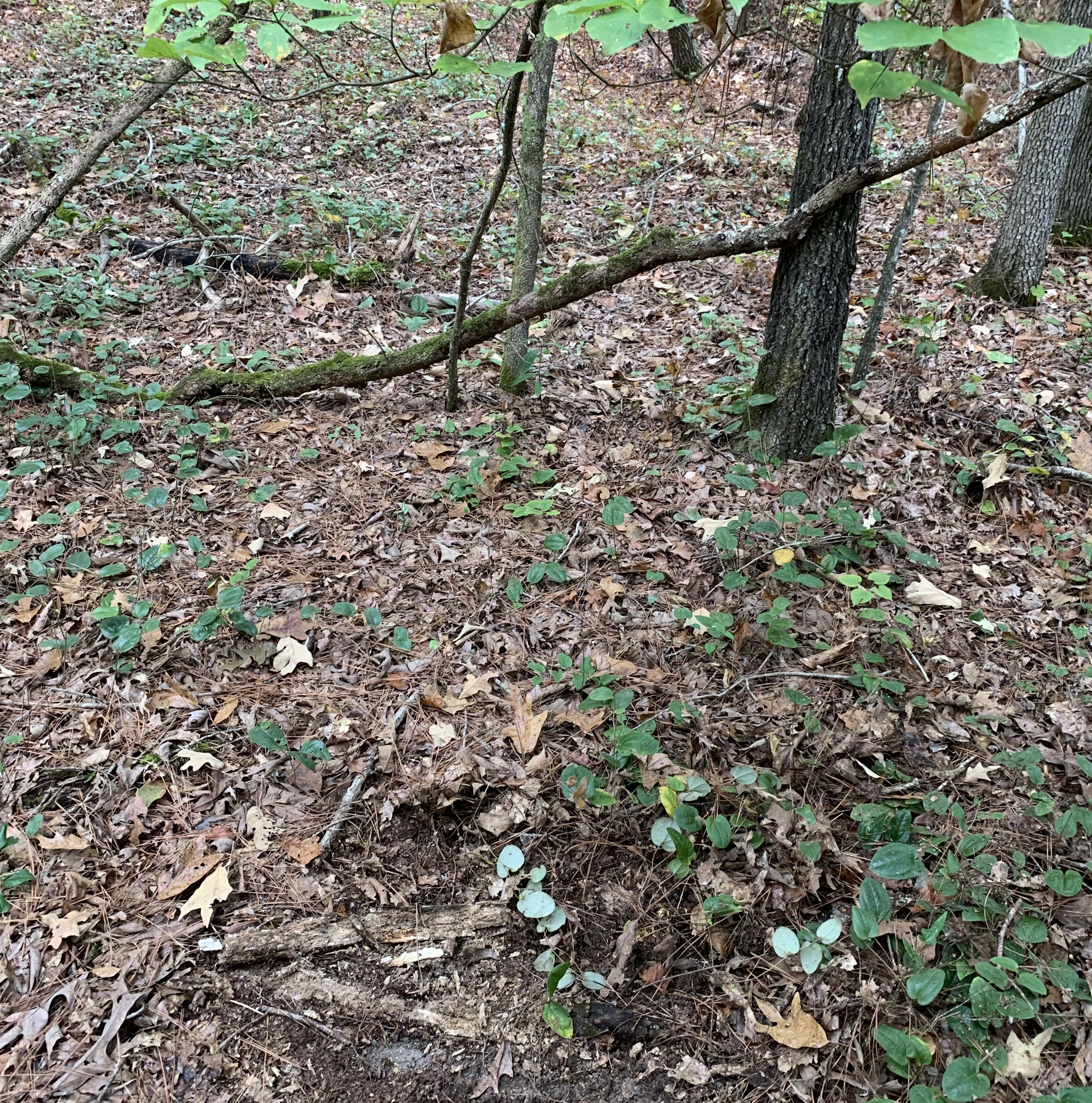Many hunters cash in vacation time to hunt the whitetail’s rut. If that’s you, try hunting rubs and scrapes to make the most of your time off.
We spoke to professor Karl Miller, a research scientist at the University of Georgia’s Deer Lab, to learn why bucks make rubs and scrapes, and how hunters can use that information to their advantage.
As a buck’s testosterone levels rise before the rut, their physiology, attitudes, behaviors and chemical signals change. “The animal goes from being kind of asexual to becoming hyper-sexual by the peak of the rut,” Miller said.
Deer have highly sensitive noses, and so they make rubs and scrapes to communicate by scent. These “signpost” communications help deer mark their territory, demonstrate their presence, and show they’re ready to breed. That’s why these behaviors increase as the rut nears, with bucks establishing their hierarchy and breeding rights.
Hunters can use those signs to locate and pattern bucks. To learn the basics behind each behavior, let’s explore how finding and reading these signs can improve your hunting strategies.

Rubs will be on small trees like the one pictured. Photo Credit: John Hafner
Bucks create rubs by raking their antlers on saplings, brush and small trees, a process that shreds and peels the bark. While doing so, scents from the buck’s forehead gland press into the wood and bark.
Miller said bucks make rubs throughout the breeding season. Research by Miller and his students show that mature bucks make most of the rubs. Likewise, a Michigan study found that yearling bucks make only about half as many rubs per season as older bucks, Miller said. The study, “Comparative Breeding Behavior and Performance of Yearling vs. Prime-age White-tailed Bucks,” was conducted by John Ozoga and Louis Verme in 1985.
Fresh rubs appear wet, and bark shavings litter the tree’s base. Sap often oozes from antler-gouged bark. As the rub ages, it dries and its vibrant colors fade, and fallen leaves soon cover the shavings.
Don’t be too ready to post up next to a large rub. Although bigger bucks tend to rub bigger trees, that’s not always the case, Miller said. Little bucks sometimes rub big trees and vice versa. Plus, not all mature bucks have huge antlers. Age, health, nutrition and genetics affect antler growth and development.

Scrapes will be an oval on the ground. Photo Credit: ATA
Bucks create scrapes by pawing at the ground, which deposits scent from their interdigital gland between the toes of their front hoofs. Once they’ve created a patch of bare ground, usually of oval shape, they sometimes urinate over their tarsal glands on the insides of their inner lower legs to distribute more scent. They also chew, lick and “gum” an overhanging limb, usually 4 to 5 feet off the ground, and deposit scents onto the limb by gently rubbing it with their forehead and eye glands. Ozoga’s research found that deer seldom return to a scrape lacking an overhanging limb.
Miller said scraping activity slowly builds during the pre-rut, peaks two weeks before the rut, and drops off during the rut as bucks get … well … “busy.” Bucks sometimes resume scraping in the late season after most breeding ends.
Many bucks often use the same scrape, but that doesn’t mean it’s a can’t-miss hunting site. That’s because bucks make 85% of their scrape visits after dark. Meanwhile, 75% of doe visits to scrapes occur after dark, according to the 2001 study “Remote Monitoring of Scraping Behaviors of a Wild Population of White-tailed Deer” in the Wildlife Society Bulletin.
Fresh, active scrapes appear moist, smell musky, and contain deer tracks. Scrapes lose their smell as they age and accumulate leaves, pine needles and other debris.
Miller suggests keying on scrapes that have been worked several times. Such scrapes have bare patches as large or larger as a garbage can’s lid, and the overhanging limb, or licking branch, is mangled. Large, well-used scrapes usually mean active deer in the area.

Knowing how to read rubs and scrapes will help you navigate your next move. Photo Credit: John Hafner
Rubs and scrapes often identify buck hotspots. Place your stand using these tips:
The number of rubs and scrapes usually relates to the density of deer or the herd’s age structure. “Two is better than one,” Miller said. Individual bucks have been known to make several rubs or scrapes in a cluster. These clusters might prompt other bucks, perhaps mature bucks, to join the behavioral conversation. If they’re lurking about, concentrate your efforts nearby.
A rub or scrape line can also help identify which direction a buck is traveling. Generally speaking, the buck was traveling toward the rub’s side of the sapling. Therefore, face the rub and look beyond it. That’s the direction the buck was likely moving, and it approached from behind you. That knowledge can help you determine where to place your stand to catch bucks in daylight.
Given a choice, deer probably won’t visit a mock scrape over a real scrape, Miller said, but they might go to both. Therefore, consider creating mock scrapes to position a buck for a good shot if you can’t find a real scrape nearby.
Miller also advises not putting a treestand near the first rub or scrape you see. First, ensure it was made in a high-traffic area that’s used regularly.
“Assemble all your information,” Miller said. “Spend time scouting, and think about where and why those rubs are being made. Then watch how they change during the breeding season.”
Also be ready to adapt. Hunters must realize the rut is dynamic and ever-changing, Miller said. If one area goes dead, activity often increases in another. Always look for fresh sign, and study deer behavior to determine the hottest site for your next treestand.
If you change your strategies as deer change areas or behavior, you’ll enjoy more success. When you find fresh, smelly, well-worked scrapes, max out your vacation and hunt from pre-dawn till dark.